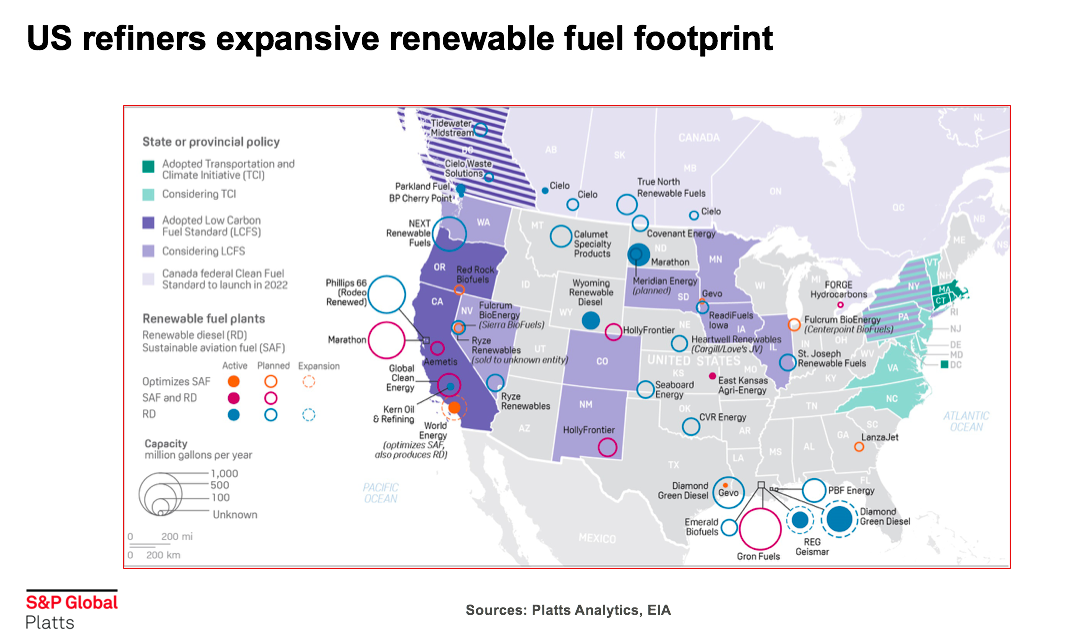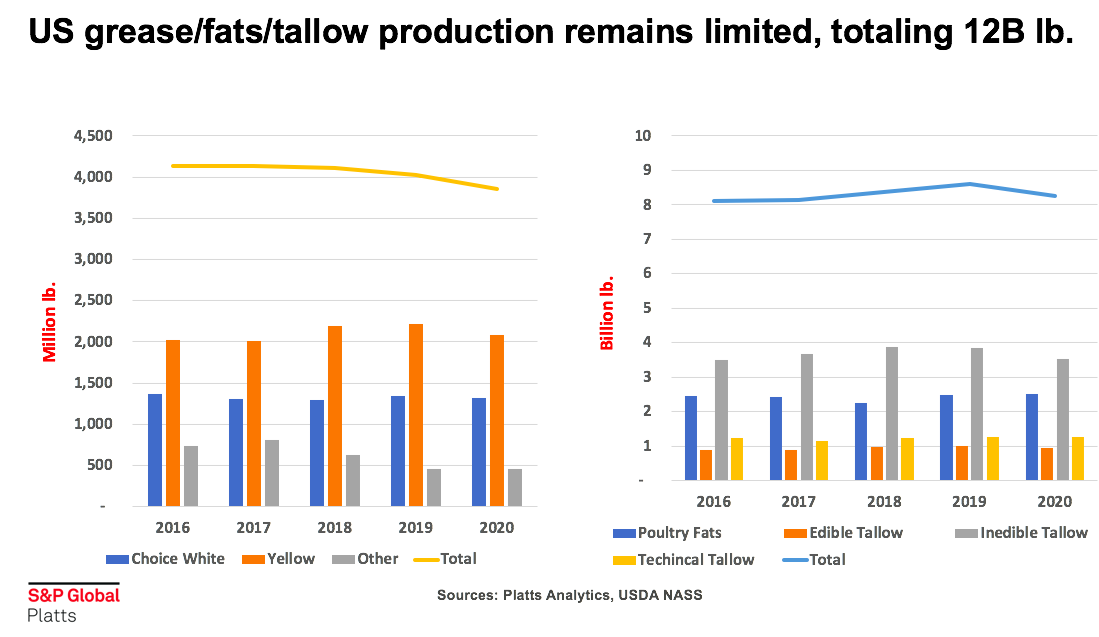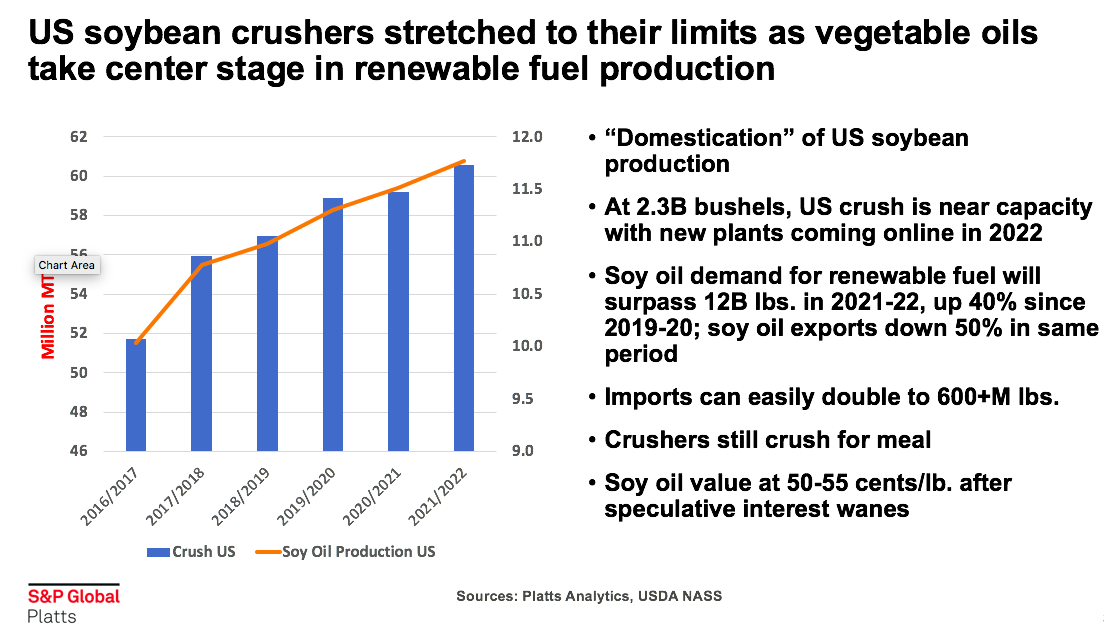Sustainable Aviation Fuel and Renewable Diesel May Be the Ticket to Eliminating U.S. Soybeans’ Dependence on China
Cashing In on Renewable Fuels 091621
Sustainable Aviation Fuel May Be the Ticket for Soybeans to have a Big Ethanol Moment
As Biden Sets Lofty Goals for the Airline Industry, Soybean Farmers Could Cash In
The Biden administration is accelerating its efforts to reduce the carbon footprint of the nation’s transportation system, and as a result, soybean growers could soon cash in on a new opportunity around low carbon fuel standards (LCFS).
“It's a growing trend across the country because states like California and Oregon have taken the lead in trying to mitigate some of the climate changes that are going on,” says Pete Meyer, head of Grain and Oilseed Analytics, S&P Global Platts.
From renewable diesel to sustainable aviation fuel it’s a growing trend, and one on which big oil is already placing big bets.
“When you look at some of the biggest plants that are out there, they are owned by some of the biggest oil companies,” says Meyer. “Marathon is a huge player.”
The race to reduce airplane emissions is gaining traction. While airlines have discussed ways to reduce air traffic’s carbon footprint, going electric isn’t an option today. Instead, the Biden administration says it’s setting a lofty goal: eliminate the airline industry’s fossil fuel usage by 2050.
"Today we are announcing another two funding opportunities for clean energy technology,” Jennifer Granholm, Secretary of Energy announced in August. “One of them is to create next-generation biofuels for airplanes and ships, which are very hard to electrify, and the second is to announce clean energy technology funding opportunity to reduce methane emissions from the coal, oil and gas.”
The funding was outlined even more by the White House in September when the Biden administration officially asked airlines for a 20% reduction in aviation emissions by 2030. And to help, the White House wants a standard aviation fuel tax credit included in the infrastructure bill currently making its way through Congress.
“There are other ways in which biofuels can be used,” Agriculture Secretary Tom Vilsack told Farm Journal’s Clinton Griffiths during a town hall in September. “And I think you're going to see in the very near future a commitment by this administration, as it relates to aviation and marine fuel. It opens up a whole new vista for the biofuel industry.”
Could Renewable Fuels Be Bigger Than Ethanol?
Meyer expects the domestication of U.S. soybean production will unfold with the efforts to reduce transportation’s carbon footprint. And he says the potential is even bigger than ethanol.
“The light might be dimming in ethanol, but there's a brighter light down the line as far as renewable fuel is concerned,” Meyer adds.
Meyer says the potential is so large, renewable diesel and aviation fuels made from soybeans has the potential to be bigger than what ethanol was for corn in the first couple of decades of the 2000s. As a result, he says the U.S. will become less dependent on China for needed soybean demand, a country that is currently the largest buyer of U.S. soybeans.
“What's going to happen is you're going to see these renewable diesel plants, sustainable aviation fuel plants, and a domestication of U.S. soybean production, which means we will be impervious to all sorts of issues that are going on in China and elsewhere. We're going to be able to use it if we can get the crush capacity,” Meyer says.
Big Oil Betting Big On Soybeans
Oil companies are already on board. In September, Chevron announced it's investing $600 million in a soybean processing partnership for renewable fuels. The joint venture with Bunge is aimed to expand soybean processing capabilities in Illinois and Louisiana.
“Chevron’s proposed joint venture with Bunge positions us to expand into the renewable fuel feedstock value chain, which will advance our higher returns, lower carbon strategy,” Chevron executive vice president Mark Nelson said after the announcement.
Chevron is just one of several oil companies making investment announcements, with news of a new, planned soybean crushing plant making headlines weekly. And Mayer says the difference between the new renewable fuels versus ethanol is it’s more sustainable.
“The difference with renewable diesel and sustainable aviation fuel is that it's not an additive,” says Meyer. “It's not like biodiesel, where you add 10% biodiesel into your regular diesel and it gets pumped into your car. This is 100% fuel.”

Meyer says the energy transition away from fossil fuels will require more renewable fuel production. Currently, S&P Global Platts says only half a dozen plants are currently online, with more than 20 still in the development stage, as announcements continue to take place.
“The fact of the matter is that, in our opinion, by the year 2025 we will need 40 billion pounds of feedstock to keep the renewable energy refineries running,” says Meyer.

Meyer says currently, the U.S. is only producing 12 to 14 billion pounds of fats and tallow a year, which is a far cry from the 40 billion needed. And Meyer thinks the gap can happen with the help of soybean oil.
“We believe it can be filled domestically,” says Meyer. “But the problem there is we need more crush plants. Because in the U.S. at the moment, crush plants are kind of running at full capacity, and almost running to their capacity. If our math is right, we're going to need 25 billion pounds, and that's all the soy oil we produce on a yearly basis.”

The Need For Soybeans
While Meyer says it may not be a major market driver for the 2022 growing season, planting soybeans could produce big price rewards in the near future.
From soybean oil produced as a byproduct of bean meal to the thought soybeans may soon be crushed for the oil instead, Meyer says renewable diesel may be the biggest ticket to securing the crop’s future for U.S. farmers.







